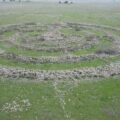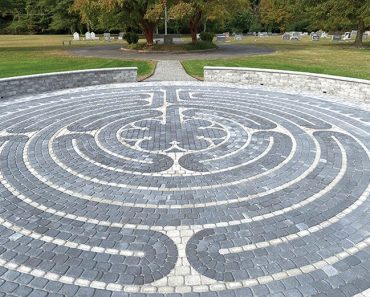A remarkable discovery in Crete has reinvigorated debate over the origins behind one of ancient Greece’s most enduring legends, drawing attention from one of the world’s most celebrated archaeology awards.
Last year, excavations at a unique Minoan building on Papoura Hill in Crete revealed a circular design which immediately drew comparisons with the fabled labyrinth, a legendary structure associated with Greece’s enduring mythology.
Now, the ancient site, which was previously called “one of the most important archaeological finds of the 21st century” by Costas Paschalidis, President of the Association of Greek Archaeologists, has received the “Archaeologist of Palmyra” Award for the Best Archaeological Discovery of 2024.
The prize was officially recognized in a ceremony in Italy at the International Archaeological Tourism Exhibition in Paestum, according to Greek Reporter.
Enter the Labyrinth
According to ancient Greek mythology, the labyrinth was constructed by Daedalus for King Minos of Crete and served the primary purpose of imprisoning the beastly Minotaur, a half-bull humanoid creature.
According to tradition, the hero Theseus plunged into the labyrinth to battle the monster, aided by the Cretan princess Ariadne’s thread, which helped him navigate the underground maze.
Beginning in 2024, excavations at the site at Papoura Hill began to unearth a massive, monumental circular structure, which soon began to draw comparisons to the mythical subterranean domain of the Minotaur.
A Discovery of Labyrinthine Proportions
The discovery of the structure was made last June during the construction of a radar system for the New International Airport of Heraklion, Crete. Greek officials quickly decided that the potential significance of the archaeological discovery superseded the construction plans for the airport, and excavations of the unique structure were soon underway.
The building at Papoura possesses a unique circular configuration, which archaeologists involved with the excavation say is unlike other similar structures known to prehistoric Crete and has no known parallels to ancient structures throughout the Aegean.

The building is close to 50 meters in diameter and covers close to 1800 square meters, which also makes it large for a structure of this period. Within the primary circular structure are a series of eight stone rings which appear at different elevations, with the largest feature—a circular component known as “Zone A”—appearing in the center.
The closest comparisons between the Cretan “labyrinth” structure and other known buildings, as far as appearance, are the similar circular shapes of some funerary buildings and residences associated with regions like Mesopotamia, Oman, and Syria from around the early Bronze Age.
Early in the excavations, archaeologists noted that although some aspects of the structure’s original appearance remain undetermined due to damage it has sustained over thousands of years, it may have originally had an almost conical shape, and the structure’s oddly situated spaces connected by narrow openings were quickly deemed to be “almost labyrinthine” by excavators.
Discovery Receives Accolades
“The Palmyra Award is significant because it recognizes an exceptional excavation,” said Greece’s Minister of Culture, Lina Mendoni, in a statement.
Mendoni said that although the existence of the unusual Minoan structure had been previously recognized, the discovery of the building archaeologists now associate with the famous labyrinth was found during archaeological work coinciding with the construction of a new airport near Kastelli.
“Experts say this find reshapes our understanding of Minoan archaeology,” Mendoni said.
Micah Hanks is the Editor-in-Chief and Co-Founder of The Debrief. A longtime reporter on science, defense, and technology with a focus on space and astronomy, he can be reached at micah@thedebrief.org. Follow him on X @MicahHanks, and at micahhanks.com.








